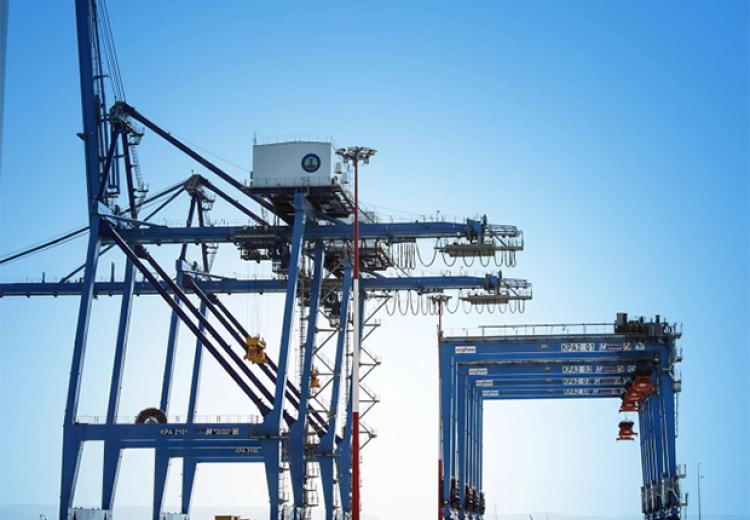Coordination, Cooperation and Integration: The road to post-COVID-19 socio-economic recovery
The COVID-19 pandemic unexpectedly hit world economies at the beginning of the year, disrupting various economic sectors. Its impact on transit trade across the Tripartite region has been monumental. It is the disruptive happenings like COVID-19 that bring the efficiency of the transport corridors into sharp focus and highlight their level of resilience to disruptions.
The challenges faced during the pandemic necessitated measures and guidelines to protect health and ensure the cross-border movement of goods and essential services at the same time. Different partner States instituted tight national COVID-19 containment measures.
However, the lack of a harmonised response mechanism for the East Africa region saw delays in cross-border movement of goods. Along the Northern Corridor, traffic at the entry and exit points was witnessed, precipitated by the measures put in place.

The Port of Mombasa
As part of efforts aimed at reducing the international spread of the virus, and to mitigate the potentially crippling longer-term consequences of the pandemic, the East African Community developed harmonised guidelines to facilitate cross-border movement of goods while observing the health protocols put in place. It was crucial to keep cross-border and transit trade flowing while ensuring that border agencies can safely undertake all necessary controls.
Along the Northern Corridor, performance reports during the pandemic period have revealed gaps and vulnerability of the existing trade facilitation policies. A special report on the Northern Corridor Performance under COVID-19 notes that many challenges experienced in facilitating cross border trade were due to unpreparedness and lack of existing trans-boundary disaster management strategies. The abrupt nature of the pandemic, coupled with the absence of tailored strategies affected and continued to affect the performance at the Port of Mombasa and the Northern Corridor at large.
The report, published in April 2020 recommends a detailed regional vulnerability assessment to put in place both national and trans-boundary disaster mitigation measures. It calls on the Northern Corridor Member States to adopt harmonised disaster response mechanism to safeguard the Transport Corridor; share early warning systems intelligence; build the capacity of personnel involved in the Transport Logistics Chain; as well as revisit existing national and regional disaster response policies that affect trade, transport and all other related infrastructure.
The Northern Corridor quarterly Performance Dashboard reports April to June and July to September 2020echo that to build resilience along the corridor and maintain a safe, secure and seamless transit transport trade, partner institutions in the Member States need to deepen their coordination, cooperation and integration of information systems.
As the region ushers in the Africa Continental Free Trade Area (AfCFTA) in January 2021, digital integration will facilitate its uptake and steer the post-pandemic socio-economic recovery. The development of the Regional Electronic Cargo and Driver Tracking System (RECDTS) by the EAC with support from TradeMark East Africa (TMEA) to share COVID-19 results among partner States is a milestone towards increased integration.
Along the corridor, progress has also been made towards identification for designation of secure and safe roadside rest stations for drivers. Recently, a multidisciplinary stakeholder team proposed 12 parking yards for upgrading to roadside stations in Kenya. Such places with minimum required facilities will improve the welfare of the truckers.
Responsive interventions notwithstanding, there is still need for harmonisation and simplification of documents, processes and procedures required for trade, transport, sanitary and phytosanitary inspection; and mutual recognition of licenses, certificates, insurance and other transport and trade-related documents.
Despite the negative impacts, the Coronavirus disease motivated the public and private sectors in Member States to work together to address different challenges, further deepening cooperation. Through online stakeholder meetings, the Northern Corridor sought to implement strategies and action items with the aim that the corridor is operated in an efficient way that augments the economic benefits of the infrastructure works, maintaining health standards, and reducing operating costs. The experience shared serves as a learning tool to enable chart a roadmap towards socio-economic recovery as well as developing the resilience of the transport corridor.
In light of the preceding, dynamic structuring, integrating and maintaining programmes by all Agencies in all levels in the Member States will ensure that events such as COVID-19 will be far easier to manage. Deep cooperation and collaboration will enhance the ability to monitor progress reliably, and proactively identify and address any issues that may arise.

